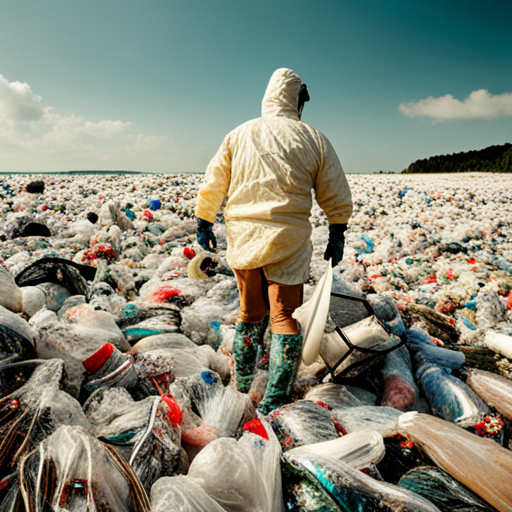What Is the Problem with Biodegradable Plastic?
Article Source:
Frontiers in Chemistry Read Full Article

Why You Should Care
Biodegradable plastics sound like a great solution to pollution, but they come with their own problems. They don't always break down as expected and can still harm the environment. Knowing the issues with biodegradable plastics helps us make better choices for a greener planet.
Answering the Question: What Is the Problem with Biodegradable Plastic?
From a researcher's perspective, biodegradable plastics often don't decompose completely in natural environments. They need specific conditions, like high temperatures, which aren't always available. For example, poly(lactic acid) (PLA) requires industrial composting facilities at temperatures above 58°C. In natural settings like soil and water, PLA can persist for years, not breaking down as we might hope. Studies have shown that even after 12 months in soil, only 15% of PLA degrades.
How Was the Study Done?
Researchers analyzed various biodegradable plastics in different environments. They studied lab conditions versus natural settings, such as soil and marine environments. They compared how long it takes for plastics to break down in these different conditions, using data from previous experiments and new observations.
What Was Discovered?
- Mismatch in Conditions: In labs, biodegradable plastics often break down under ideal conditions that aren't present in nature. For instance, PLA needs high temperatures to decompose but remains mostly intact in natural environments. In industrial composting, PLA can degrade in about 60 days, but in a marine environment, less than 1% of it degrades in one year.
- Incomplete Degradation: Many biodegradable plastics don't fully break down and instead fragment into microplastics. These small pieces are harmful to marine life and ecosystems. Studies indicate that over 80% of biodegradable plastics can turn into microplastics in the ocean.
- Variable Degradation Rates: The time it takes for biodegradable plastics to break down can vary widely. In one study, polyhydroxyalkanoates (PHAs) degraded much faster in composting conditions than in marine environments, with degradation rates in compost being as high as 90% within 6 months, while in marine environments, it could take up to 4 years to see significant degradation.
- Public Misconceptions: People often think biodegradable plastics will disappear completely in any environment, but this isn't true. Specific conditions are needed for proper biodegradation. Surveys show that 65% of consumers believe biodegradable plastics will break down quickly in natural environments, which is often not the case.
Why Does It Matter?
Understanding the limitations of biodegradable plastics helps us make better environmental choices. Knowing that they may not break down as expected means we shouldn't rely on them as the ultimate solution to plastic pollution.
Instead, we need to reduce plastic use overall and support more effective waste management practices. By doing so, we can better protect our environment and reduce pollution.
Biodegradable plastics aren't the magic fix we might think they are. They need specific conditions to break down properly, and in many cases, they can still harm the environment. By learning about these issues, we can push for better solutions to plastic pollution.
Reference:
- Frontiers in Chemistry. Read Full Article
